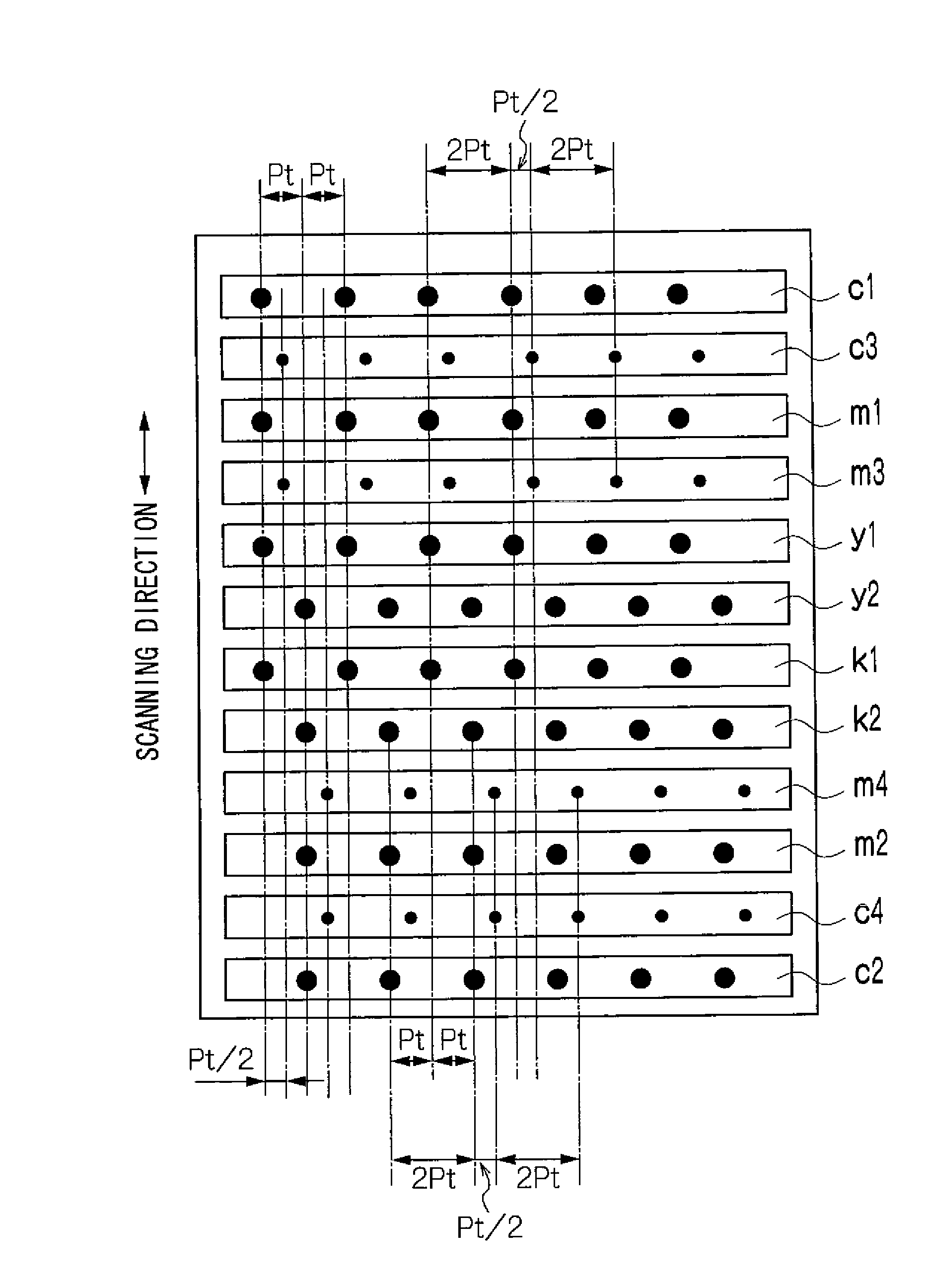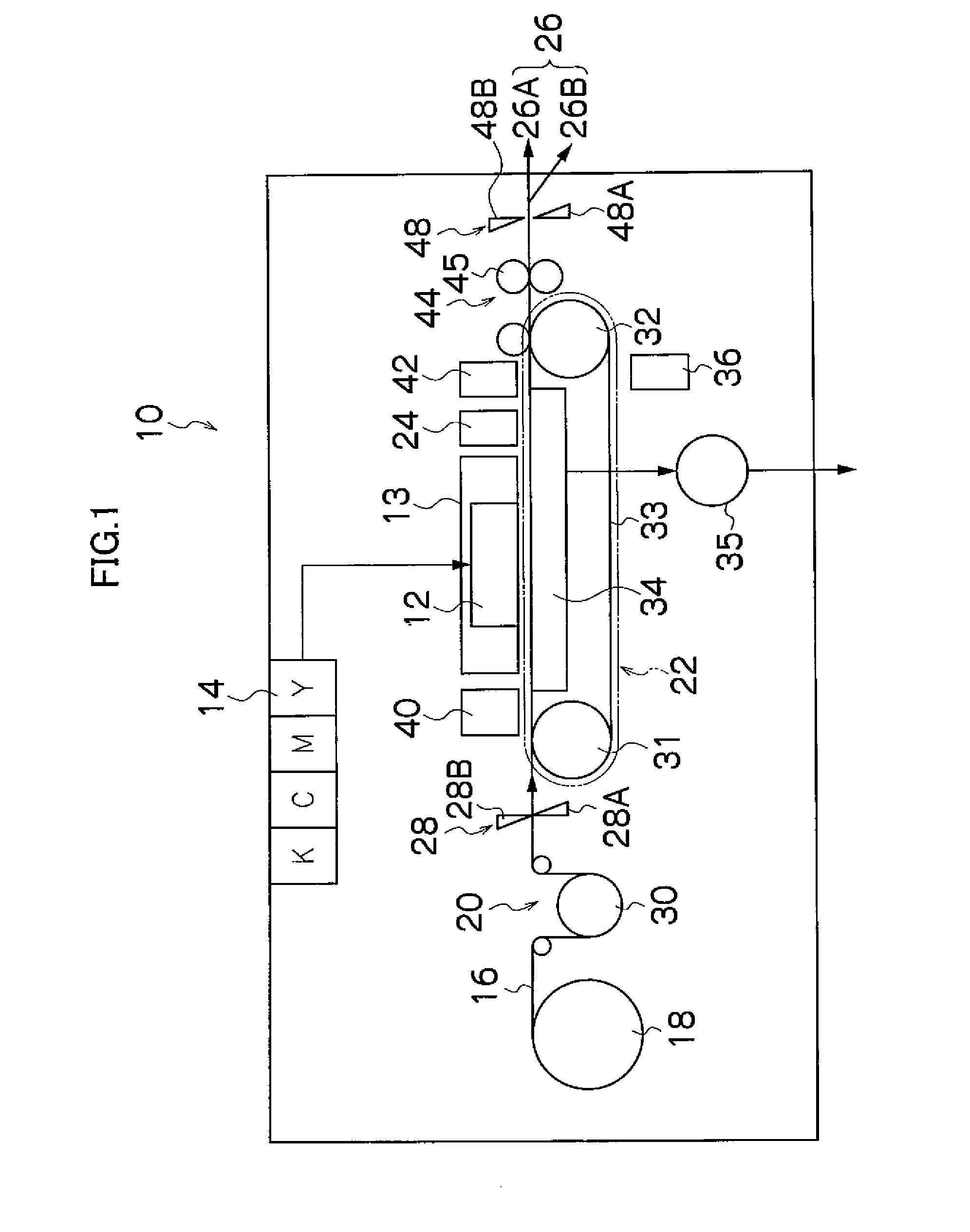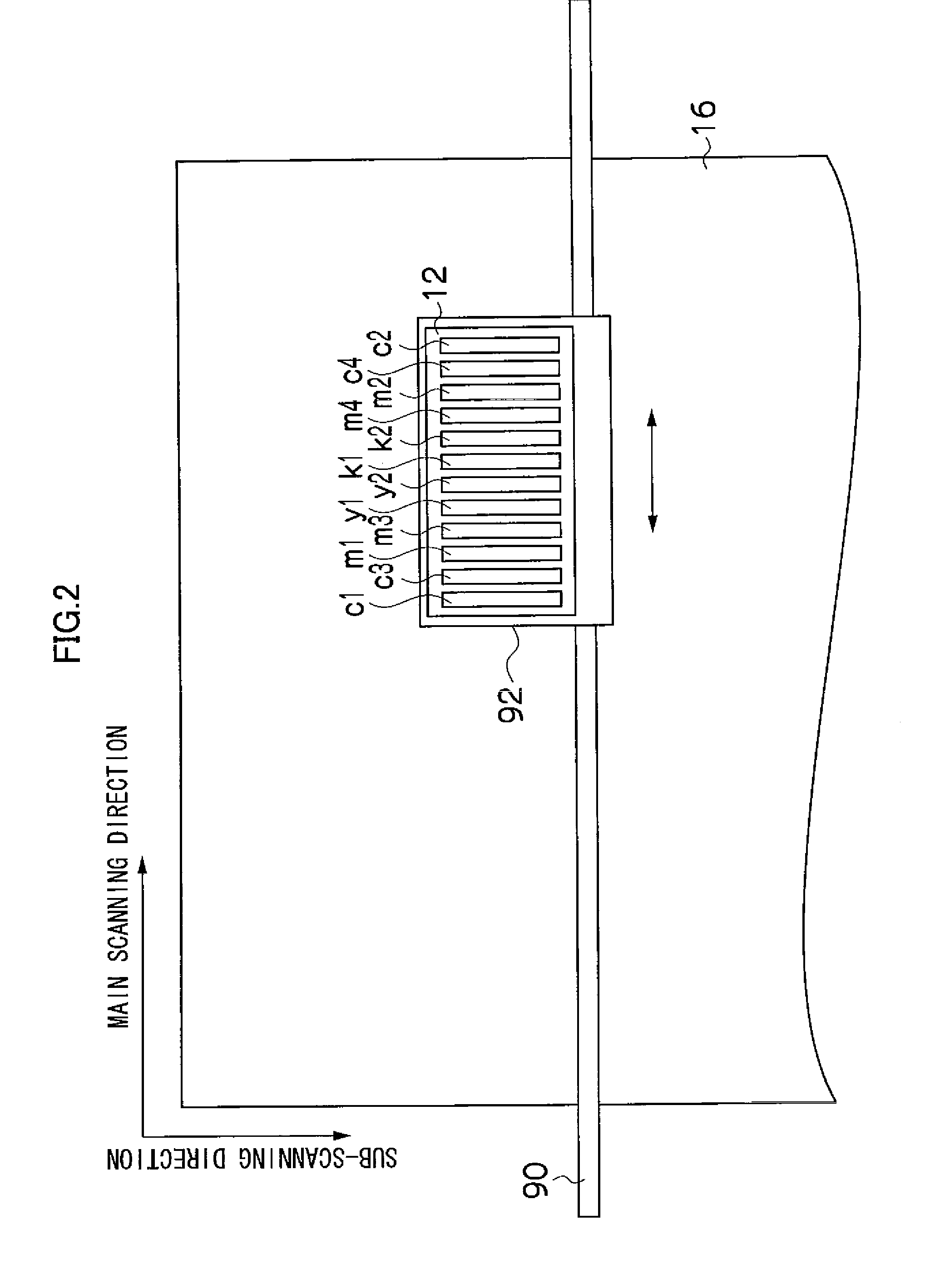Image forming method and image forming apparatus
a technology of image forming and nozzle, which is applied in the direction of printing, other printing apparatus, etc., can solve the problems of band-shaped non-uniformities in the resulting image, non-uniform effective nozzle pitch, and inability to achieve uniform effective nozzle pitch, so as to reduce the band-shaped non-uniformity and reduce the distance between the dots.
- Summary
- Abstract
- Description
- Claims
- Application Information
AI Technical Summary
Benefits of technology
Problems solved by technology
Method used
Image
Examples
first embodiment
[0036]FIG. 1 is a general schematic drawing showing one embodiment of an inkjet recording apparatus relating to an embodiment of the present invention. As shown in FIG. 1, the inkjet recording apparatus 10 according to the present embodiment comprises: a print head 13 including a recording head 12 which ejects inks (liquids containing coloring material) of respective colors of black (K), cyan (C), magenta (M) and yellow (Y) and a scanning drive mechanism for same (not illustrated); an ink storing and loading unit 14 for storing inks of the respective colors to be supplied to the recording head 12; a paper supply unit 18 for supplying recording paper 16 which forms a recording medium; a decurling unit 20 for removing curl in the recording paper 16; a suction belt conveyance unit 22, disposed facing the nozzle surface (ink ejection surface) of the print unit 13, for conveying the recording paper 16 while keeping the recording paper 16 flat; a print determination unit 24 for reading th...
example 1
Method of Dividing Whole Density Region Into Low Density, Medium Density and High Density
[0139]If the whole region is divided into a low-density region, a medium-density region and a high-density region, then the approximate reference measures for these respective regions are divided as indicated below, using the droplet ejection rate as an indicator (namely, the ratio of dots actually ejected, with respect to the total region of possible droplet ejection). In other words, if the droplet ejection rate is taken to be p, then the reference measure of the low-density region is 0≦p≦¼, the reference measure of the medium-density region is ¼≦p≦⅔, and the reference measure of the high-density region is ⅔<p≦1.
[0140]For reference purposes, FIGS. 14A and 14B shows states where p=¼ and ⅔. FIGS. 14A and 14B show states where the normal dot (main dot) diameter=42 μm, and the dot pitch=21 μm. “p=¼” can be taken to mean “a region where the dots do not overlap with each other”, and “p=⅔” can be tak...
example 2
Method of Dividing Whole Density Region Into Low Density and High Density
[0144]If the whole density region is divided into two regions, a low-density region and a high-density region, then taking the droplet ejection rate (the ratio of the dots actually ejected, with respect to the total region of possible droplet ejection) to be p, the approximate reference measures of the respective regions are such that, for example, a range of 0≦p<¼ is taken as the reference measure for the low-density region and a range of ¼<p≦1 is taken as the reference measure for the high-density region. In any case, as stated previously, the figures given above are no more than reference measures, and desirably, those are determined appropriately on the basis of the actual dot pitch and dot diameter.
If Printing a Low-Density Image:
[0145]In this case, similarly to the “Example 1” described above, the dots are ejected sparsely, and therefore banding, which is the issue to which the present application relates...
PUM
 Login to View More
Login to View More Abstract
Description
Claims
Application Information
 Login to View More
Login to View More - R&D
- Intellectual Property
- Life Sciences
- Materials
- Tech Scout
- Unparalleled Data Quality
- Higher Quality Content
- 60% Fewer Hallucinations
Browse by: Latest US Patents, China's latest patents, Technical Efficacy Thesaurus, Application Domain, Technology Topic, Popular Technical Reports.
© 2025 PatSnap. All rights reserved.Legal|Privacy policy|Modern Slavery Act Transparency Statement|Sitemap|About US| Contact US: help@patsnap.com



